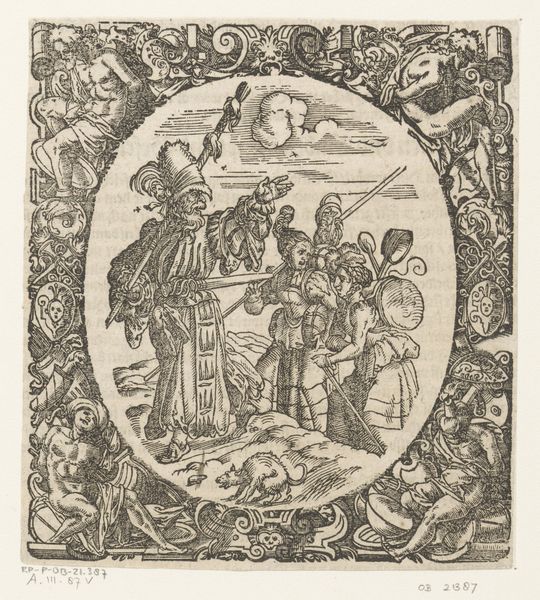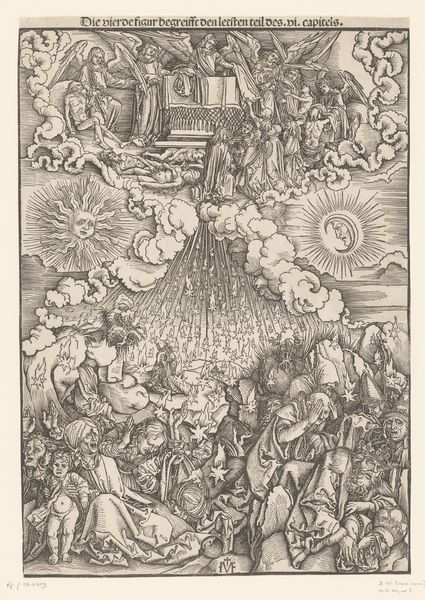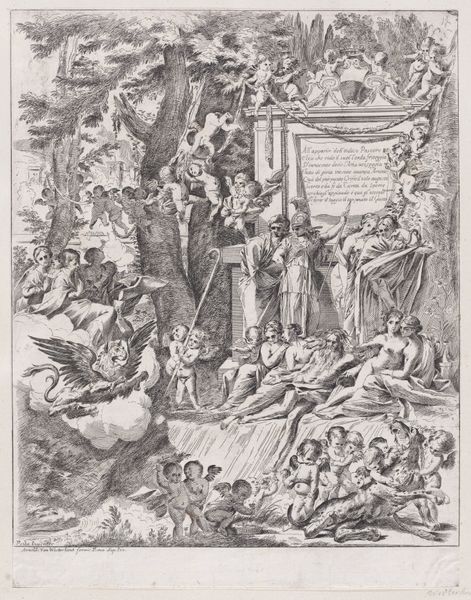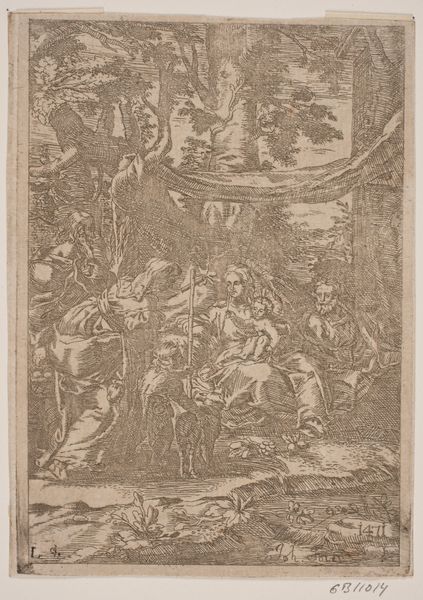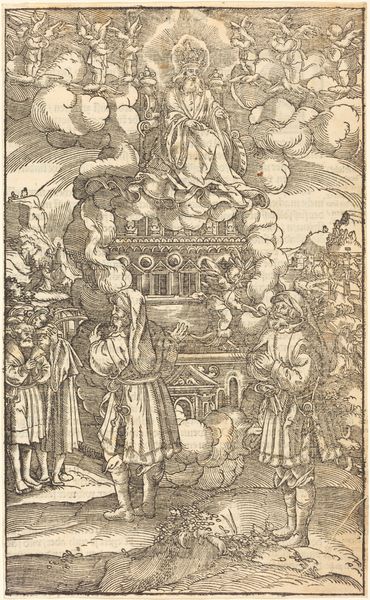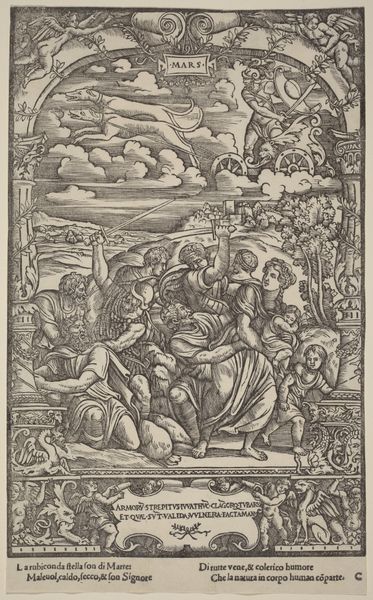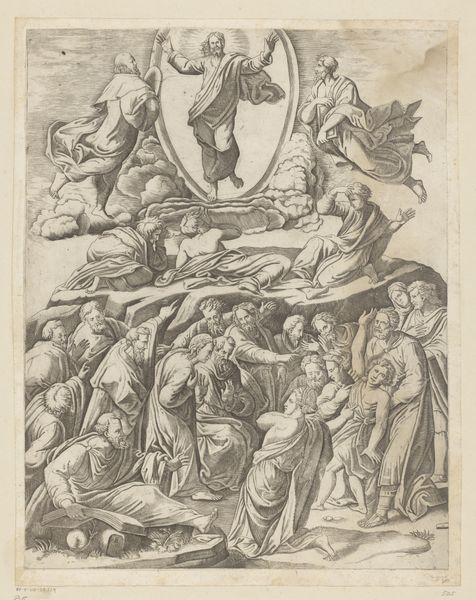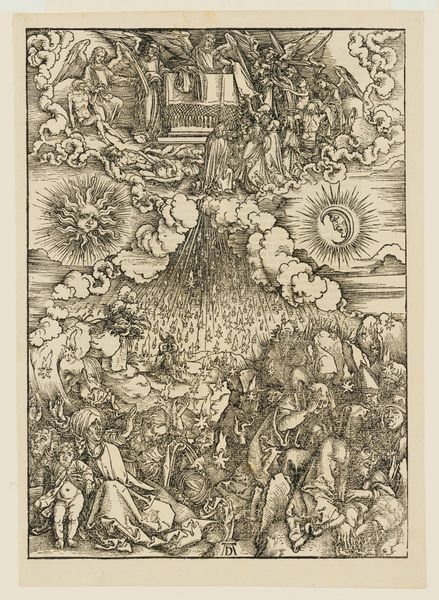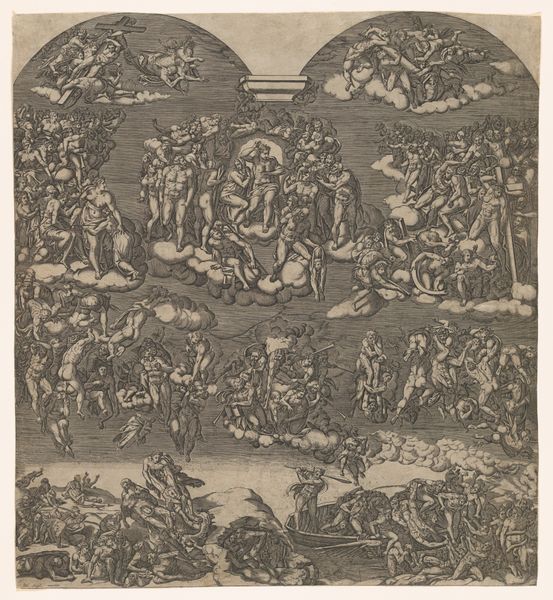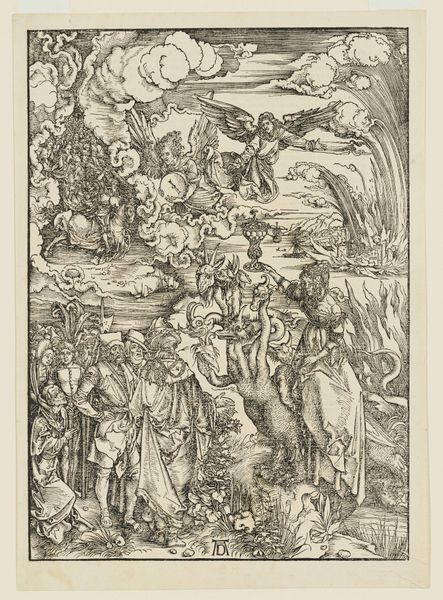
print, woodcut
#
germany
#
narrative-art
# print
#
figuration
#
woodcut
#
line
#
history-painting
#
northern-renaissance
Dimensions: 9 × 7 1/16 in. (22.86 × 17.94 cm) (image, sheet)
Copyright: Public Domain
Editor: We're looking at Albrecht Altdorfer's "The Resurrection of Christ," made in 1512. It’s a woodcut print, and the level of detail is incredible. It strikes me as quite dramatic, almost chaotic, especially at the bottom of the image. What do you see in this piece, considered from the perspective of pure form? Curator: Indeed, the dense composition is one of its most striking features. Note how Altdorfer uses line, not just to delineate form, but to create texture and movement. The chaotic swirl of bodies at the bottom contrasts sharply with the ordered symmetry of the angels above, drawing the eye upward to the figure of Christ. Consider the use of light and shadow. How does it define the planes of the figures? Editor: I see what you mean. The strong contrast between light and shadow definitely gives the figures a sense of volume, even though it’s a print. And the lines are so varied – thick and bold in some places, fine and delicate in others. Is that intentional? Curator: Undoubtedly. That variation contributes to the overall dynamism of the composition. Notice also the figure of Christ – positioned at the center, yes, but more importantly, bathed in light, distinct from the figures around him. Semiotically, this emphasizes the centrality of Christ in a compelling way. The linear nature underscores, almost engraves, his image as supreme. Editor: So, it's the way the artist manipulates the visual elements – the line, the contrast, the composition – that creates meaning and impact, independent of any historical or religious context? Curator: Precisely. The image communicates its message through formal relationships and internal structures, more so than cultural references. We decode through observing compositional techniques rather than focusing on who’s in the image. Editor: That makes me think differently about the work, I see how much can be understood just by analyzing it visually! Curator: Precisely, that intense look gives a strong handle on it!
Comments
minneapolisinstituteofart almost 2 years ago
⋮
It is dawn. Angels have pulled aside the sarcophagus lid, and now—framed by clouds and a heavenly aureole—Christ hovers above his empty tomb. Soldiers in fanciful armor surround the tomb: some sleeping, some just roused, and others actively attempting to understand the miracle before them. Albrecht Altdorfer was one of the foremost artists of Renaissance Germany. With the collaboration of a woodblock cutter whose name we do not know, he made this image with lines so fine that they rival the art of copper plate engraving. Note how the figure of Christ is printed more darkly than the rest of the image, thereby giving him added presence.
Join the conversation
Join millions of artists and users on Artera today and experience the ultimate creative platform.

